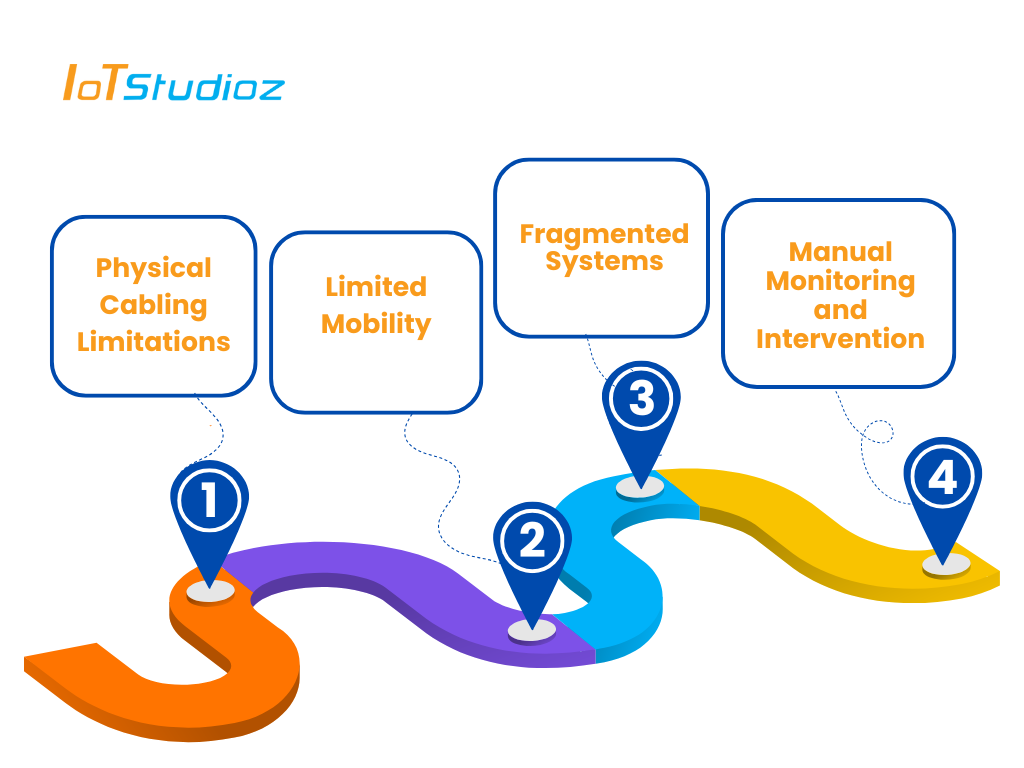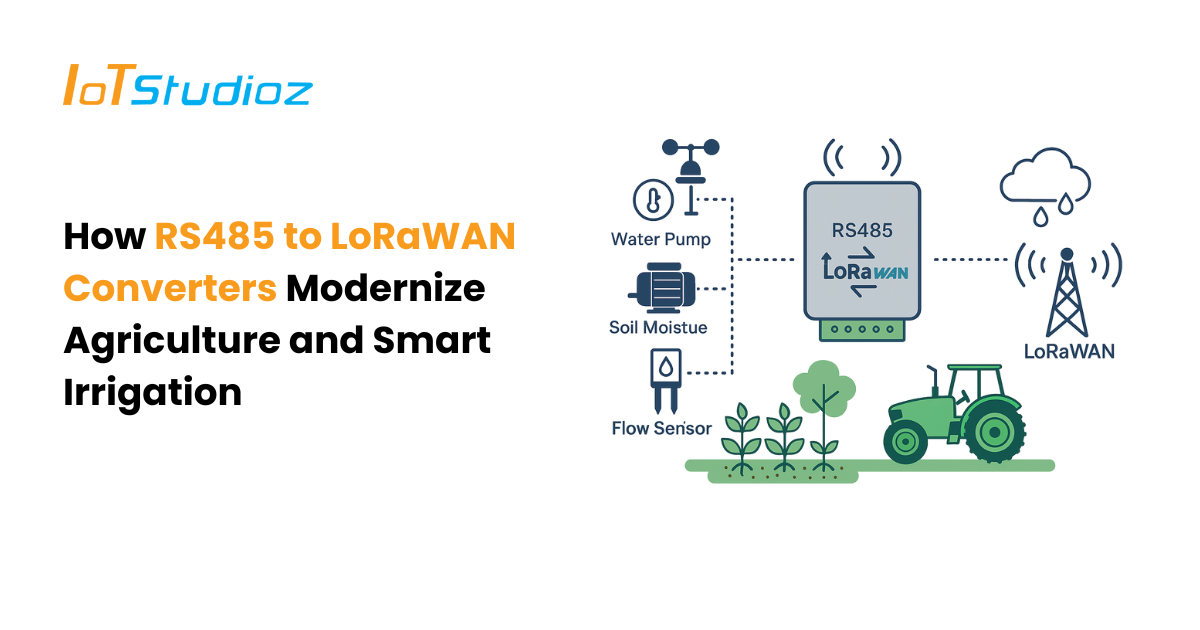Agriculture is no longer limited to soil, water, and manual labor. The sector is undergoing a digital shift, with smart farming techniques enhancing productivity and resource efficiency. Data-driven decisions are helping farmers achieve higher yields while conserving water, energy, and manpower. However, one of the biggest hurdles in this transition is connecting traditional agricultural equipment to modern IoT systems.
Many existing field devices use RS485, a serial communication protocol. Unfortunately, RS485 devices are tethered by wiring, distance limitations, and centralized control. Enter RS485 to LoRaWAN Converters—the bridge between conventional devices and wireless IoT platforms. These converters empower farmers to implement smart irrigation, environmental monitoring, and automated control—without replacing legacy infrastructure.
Understanding RS485 and LoRaWAN Technologies
Before diving into how RS485 to LoRaWAN Converters are revolutionizing agriculture, let’s understand the two key technologies involved.
RS485 Protocol
RS485 is a widely used serial communication standard in industrial automation, agriculture, and building management systems. It supports:
- Half-duplex communication (one direction at a time)
- Multi-drop capability (up to 32 devices)
- Communication distances up to 1200 meters
- Strong resistance to electrical noise
Most soil sensors, flow meters, and irrigation controllers in agriculture use RS485 due to its robustness.
LoRaWAN (Long Range Wide Area Network)
LoRaWAN is a wireless protocol designed for long-range, low-power communication. It is ideal for IoT applications that require:
- Kilometers of coverage (up to 15 km in open areas)
- Battery-powered operation (10+ years)
- Low data throughput
- High reliability and scalability
LoRaWAN is particularly effective in rural and agricultural landscapes, where cellular coverage may be sparse and power access is limited.
What Are RS485 to LoRaWAN Converters?
RS485 to LoRaWAN Converters are hardware devices that translate data from RS485 serial lines to LoRaWAN wireless packets, enabling remote access and control via gateways and cloud platforms.
These converters allow existing RS485-enabled sensors or controllers to:
- Communicate over long distances wirelessly
- Transmit data to cloud dashboards
- Integrate with mobile apps, alert systems, and analytics tools
They serve as a cost-effective retrofit solution for farms that want to embrace IoT without replacing every legacy device.
Challenges in Traditional Agricultural Monitoring
While precision agriculture has made leaps, many farms still face roadblocks when trying to scale digital monitoring systems. RS485-based devices, though reliable, present several limitations:

a. Physical Cabling Limitations
- RS485 wiring has distance limits (~1.2 km)
- Trenches must be dug for cable installation
- Maintenance costs increase with cable wear or rodent damage
b. Limited Mobility
- Devices must remain connected via physical cables
- Relocating sensors or controllers is time-consuming and costly
c. Fragmented Systems
- Lack of interoperability between different RS485 devices
- No centralized view of environmental data or equipment status
d. Manual Monitoring and Intervention
- Field technicians are needed to collect data or make adjustments
- Delayed response to critical conditions like low moisture or equipment failure
Role of RS485 to LoRaWAN Converters in Agriculture
RS485 to LoRaWAN Converters solve these challenges by providing a wireless communication layer over existing devices. Here’s how they help modernize agriculture:
- Seamless IoT Integration: They connect RS485 sensors (e.g., soil moisture, temperature, EC) to LoRaWAN gateways, enabling cloud-based data logging, alerts, and analytics.
- Long-Range Wireless Capability: LoRaWAN communication enables data transmission over 10–15 km, perfect for expansive farms, orchards, and vineyards.
- Real-Time Monitoring and Alerts: Data is available in real-time on dashboards, and users receive SMS or email alerts when thresholds are breached.
- Plug-and-Play Deployment: Most converters are configured with minimal effort and support industry-standard protocols like Modbus RTU.
Key Applications in Smart Irrigation
One of the most powerful use cases of RS485 to LoRaWAN Converters is smart irrigation, where intelligent decisions are made based on soil and environmental data.
Soil Moisture Monitoring
- RS485 probes measure volumetric water content.
- Data is wirelessly sent via LoRaWAN to a central system.
- Irrigation schedules are automated based on actual moisture levels.
Pump and Valve Control
- Converters enable wireless control of RS485-enabled pumps and valves.
- Users can open/close valves remotely based on crop needs or weather forecasts.
Weather Data Integration
- Weather stations connected via RS485 send temperature, humidity, and wind speed data to LoRaWAN gateways.
- These insights help fine-tune irrigation and pest control strategies.
Flow and Pressure Monitoring
- Flow meters detect anomalies like leaks or clogs.
- Alerts are generated in real-time to prevent water loss or crop damage.
Benefits of Using RS485 to LoRaWAN Converters in Agriculture
The combination of legacy compatibility and modern connectivity makes these converters a key enabler in agri-tech ecosystems.
| Benefit | Impact on Agriculture |
| Cost Savings | Avoids replacing existing RS485 devices and minimizes wiring infrastructure investments. |
| Expanded Coverage | Wireless range exceeds 10 km, suitable for even the largest fields or remote greenhouses. |
| Low Energy Usage | Devices can run on solar panels or batteries for years, reducing operational costs. |
| Scalability | Add new sensors or control units with ease, without changing wiring or architecture. |
| Centralized Data View | Monitor all connected devices from a single dashboard, accessible from anywhere. |
| Data-Driven Decisions | Precise data improves crop yields, reduces water usage, and ensures better ROI. |
Real-World Implementation Examples
1. Vineyard Automation in Northern Italy
A vineyard deployed RS485-based soil sensors and connected them via RS485 to LoRaWAN Converters. Using solar-powered nodes, they collected moisture and temperature data, optimizing irrigation cycles. Water consumption dropped by 30%, and grape quality improved due to controlled hydration.
2. Rice Field Smart Irrigation in South India
Farmers equipped legacy water pumps and sensors with RS485 to LoRaWAN Converters. They automated pump scheduling based on water level and soil moisture feedback. The result was a 40% reduction in electricity use and a 25% increase in yield due to consistent irrigation.
Key Considerations Before Deployment
Before implementing RS485 to LoRaWAN Converters in agricultural systems, consider the following:
- Protocol Support: Ensure your RS485 devices use standard protocols like Modbus RTU.
- Power Source: Choose converters that support battery or solar operation for off-grid setups.
- LoRaWAN Gateway Placement: Position gateways for optimal signal coverage across your farm.
- Security: Look for encryption support (AES-128) and secure OTA updates.
- Environmental Protection: Use IP-rated enclosures for devices exposed to moisture, dust, or chemicals.

Conclusion
RS485 to LoRaWAN Converters are revolutionizing the way agriculture operates. They enable farmers to combine the reliability of RS485 devices with the flexibility and scalability of LoRaWAN networks. As a result, farms can evolve into smart, efficient, and sustainable operations—without the need for massive infrastructure overhauls.
From soil moisture sensors to irrigation pumps, these converters open up a world of possibilities for smarter farming. As the agricultural sector embraces IoT at scale, RS485 to LoRaWAN Converters will be at the heart of this green transformation.
FAQs
Q1: Can RS485 to LoRaWAN Converters work with any RS485 device?
Most converters support Modbus RTU, which is a widely used RS485 protocol. Compatibility with other proprietary protocols should be verified with the device manufacturer.
Q2: How far can RS485 to LoRaWAN Converters transmit data?
In open agricultural fields, LoRaWAN signals can reach 10–15 km depending on antenna gain and terrain conditions.
Q3: Are RS485 to LoRaWAN Converters suitable for remote farms without electricity?
Yes, they are ideal for off-grid locations. These converters support solar and battery-powered operation with ultra-low power consumption.
Q4: Can I monitor data from these converters on a mobile app?
Yes. Most converters transmit data to a cloud-based platform, which can be accessed via desktop dashboards or mobile apps.
Q5: Do I need a license to operate LoRaWAN devices?
In most countries, LoRaWAN operates in unlicensed ISM bands, making it free to use for personal and commercial applications.

